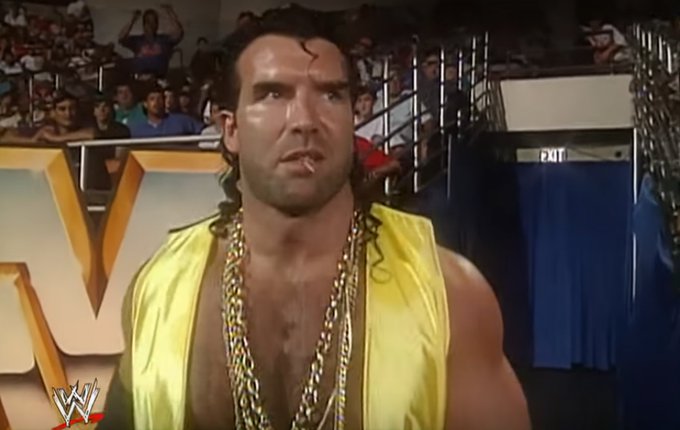Wrestler Debuts- Part 1 (Early 90s)
Follow @JCoolLOP
Welcome to the Cool Points.
The current wrestling product is built on the foundation of the stars and promoters of the past. While listening to and reading the reflections of people like Jim Ross, Bruce Prichard, and Eric Bischoff, one picks up on how cyclical things are. Pro wrestling has tropes and rules that create the best results for the feuds and matches being presented. Yes, there are times to deviate and try something new, but the best results often occur with tried-and-true methods.
Something that has interested me in recent years is how wrestlers debut in a company. How does the company prepare for their arrival, garner fan interest, and promote them towards a successful run? Perhaps there are consistently used methods here too, or maybe there are a variety of “good” ways to promote a new wrestler on the roster?
In this series of columns, we’ll look at wrestler debuts, mostly in the WWE over the past 30 years. Are some wrestlers set up to fail from the beginning or is that more a factor of their own skill set, look and charisma, or some combination of the two? How often do wrestling debuts mirror one another? Which ones lead to the most success?
1991-1992 Notable Wrestler Debuts
| Wrestler | Vignettes | Debut | Follow Up | PPV Debut |
|---|---|---|---|---|
| Repo Man | Yes, 1 week before debut match | Nov. 16 Superstars | Promo time + assists Ted DiBiase in winning back his Million Dollar Belt… | This Tuesday in Texas, with DiBiase, defeats Virgil and Santana |
| Tatanka | Yes, 1 week before debut match | February 2 Superstars | Defeats low card veterans on weekly TV | Wrestlemania VIII, defeats Rick Martel |
| Papa Shango | Yes, 1 week before debut match | February 8 Superstars | Defeats enhancement talent on weekly TV | Wrestlemania VIII, attacks Hulk Hogan post main event match, but is rebuffed by a returning Ultimate Warrior. He begins a feud with Warrior for 2 months. |
For these three wrestlers, they all received a vignette one week before their first match. They earned a number of wins prior to a PPV appearance, building them up to a favourable outcome at their debut PPV. In the case of Papa Shango, however, insert a main event run-in instead of a proper match. Of the three wrestlers here, Tatanka has the most consistent and lengthy run. I think this group shows that the weekly matches and promo time can do the same, if not, more work than character-building vignettes.
| Wrestler | Vignettes | Debut | Follow Up | PPV Debut |
|---|---|---|---|---|
| Beverly Bros. | No | June 22 Superstars | Video insert promo on show, TV matches through summer and fall | Survivor Series 1991, with Nasty Boys, defeat Rockers & Bushwhackers |
| Headshrinkers | No | September 14 Superstars (French version) | defeat enhancement talent for two months prior to PPV | Survivor Series 1992, defeat High Energy (Owen Hart and Koko B. Ware) |
| Max Moon | No | September 26 Superstars | defeats enhancement talent for a few months | Royal Rumble ’93, loses in Rumble match |
| Yokozuna | No, but his arrival was mentioned by commentary team a few months prior | October 31 Superstars | defeats enhancement talent for a month prior to PPV | Survivor Series 1992, defeats Virgil |
Taking into consideration my previous comments on vignettes, this group of debuting wrestlers didn’t receive any promos ahead of their first TV appearance. What is important is that they won their debut match and continued to win their matches for weeks leading up to the PPV. That seems to be a consistent formula during this time period to build credibility for new wrestlers and teams, and that’s fairly sensible. If you’re in the business of building up superstars, getting those early wins are necessary to convince fans to see them that way. Of this group, Yokozuna would go on, very quickly, to be a top draw, but the Beverly Brothers were involved in the most entertaining and competitive match.
| Wrestler | Vignettes | Debut | Follow Up | PPV Debut |
|---|---|---|---|---|
| I.R.S. | Yes, from late March to early May 1991 | April 22 MSG, pre-match promo + defeats Jimmy Snuka | Consistent matches + interview by Paul Bearer at Funeral Parlor | SummerSlam 1991, defeats Greg Valentine |
| Sid Justice | Yes, June to July 1991 | June 15 Superstars | Endorsements from other wrestlers each week to establish strength and fear | Guest Referee of main event match at SummerSlam 91 |
| Razor Ramon | Yes, 6 weeks before first match | August 8 Superstars | Gets promo time and attacks Macho Man during interviews, aligning with WWF Champion Ric Flair to lead up to PPV | Survivor Series 1992, loses by DQ with Flair vs. Macho Man and Mr. Perfect |
| The Mountie | Yes, shown throughout January 1991 | January 26 Superstars | Assaults wrestlers post match with shock stick | Wrestlemania VII, defeats El Matador (Tito Santana) Celebrates with Nasty Boys after their tag title win |
| Nailz | Yes, a month before debut, but not shown. Only his voice was heard from a prison cell. | May 30 Superstars, surprise attack on Big Boss Man | Defeats enhancement talent and attacks them post-match for a number of weeks | Summer Slam ’92, defeats Virgil and attacks him post-match with Big Boss Man’s nightstick |
| Doink | No, but was shown watching matches in crowd and/or doing pranks on wrestlers for 6 weeks Includes feud with Crush on debut Monday Night Raw in January 1993 |
January 31 Wrestling Challenge, wins match + insert promo during match | Feuds with Big Boss Man and Tatanka | Wrestlemania IX, defeats Crush and receives promo/interview time before the match |
This group has a mix of top stars and mid-card draws, and what they had in common is significant promo time invested in them before their first TV appearance. Uniquely, Doink (the clown)’s promotion time was being seen at events and doing pranks on wrestlers. Physical comedy in wrestling is fairly common, but tying it to a clown character wasn’t. I think the tougher part was to convince fans that Doink could be competitive in a match, which is why he didn’t get the usual treatment of facing enhancement talent.
For the most part, all of these wrestlers won their debut TV match, which I’ve established is an important and consistent trend in building up superstars. Notably, the Mountie and Nailz, from opposite sides of the law, were attacking their opponents after matches to garner heat from the fans. Probably confused the kids to be booing law enforcement and criminals at the same time!
Sid Justice was the only one not to have a match at his debut PPV. Instead, he was the special guest referee at Summer Slam ’91’s main event between Hulk Hogan’s team and Sgt. Slaughter’s team. Like Razor Ramon, being affiliated with the top draws of the company enabled Sid to forego the usual route of building up a series of wins to win over audiences. I would add that both Sid and Razor had “larger than life” personalities that were well exposed to fans in their promos. So their physical size, personality and promo investment replaced the need for them to wrestle as often as other wrestlers to be believed as superstars. Certainly, the careers of both men would support that. Within the space of a year, both men were wrestling in main event feuds, and over time would win multiple championships in the WWF.
The Finish
My working hypothesis is that there are a limited number of ways a wrestler can debut and be built up in a company, especially if they are young or new to the company. Fans need to become familiar with a wrestler and they need time and exposure for that to happen. As we move through the series, I’m interested to see if there are patterns for the more successful wrestlers and if the WWF/E was able to create unique pathways, or if they stuck with the tried and true methods above.
Next outing, we’ll look at 1993 and 1994.
COOL IT!
Here are a few questions to consider from today’s column:
Did you notice any trends that I didn’t?
If you were a debuting wrestler, at which big 4 PPV would you most want to wrestle?
Peace!


